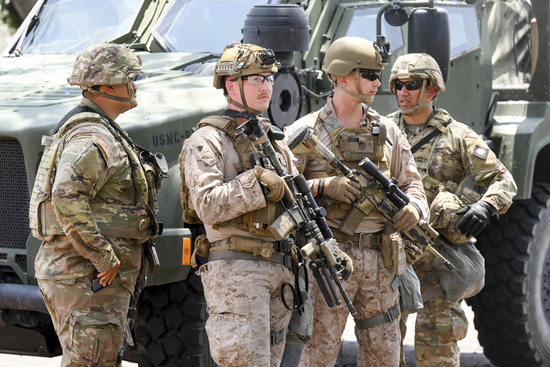President Donald Trump has deployed thousands of National Guard members and Marines to Los Angeles in an attempt to quell protests against ICE’s unconstitutional immigration raids.
And as protesters exercising their First Amendment rights are met with a sea of active military personnel, a question has popped up across the country: How much power does the U.S. military have against its own citizens?
“There doesn’t seem to be a perfect match between what the administration has stated that they’ve authorized these National Guard members or Marines to do, and what they are actually doing,” Joseph Nunn, legal counsel of the Liberty and National Security Program at the Brennan Center for Justice, told Daily Kos.

Of course, the legality behind Trump’s actions has been a topic of contention over the past week. Typically, a sitting president would have to invoke the Insurrection Act to deploy military members within the United States. But Trump has found a sneaky backdoor through the Title 10 orders.
Under Title 10 USC 12406, the Trump administration can deploy active military units if the United States is being invaded by a foreign nation, if there is a rebellion against the government, or if Trump is unable to execute the law with regular law enforcement.
But it was actually Defense Secretary Pete Hegseth who tried to justify the use of this bypass maneuver by claiming that the protesters fit the justification for a “foreign invasion.”
Even so, without invoking the Insurrection Act, the military is supposed to be limited in what it can do. Then again, as Nunn told Daily Kos, when put in an active area of duress, the situation can quickly escalate.
“The administration has put forth this theory that is rooted in … protecting federal property,” he said. “Guarding federal property or protecting ICE agents still puts military personnel in a position where they could be interacting with civilians in a sort of law enforcement capacity, and that’s, you know, legally dubious.”
In other words, military members may not be authorized to physically engage or arrest protesters without the Insurrection Act, but when directly placed in a situation where they may need to do so, the lines become blurred.
“This is not how we do things in the United States,” Nunn added. “In the United States of America, we deploy the military as a last resort when civilian authorities are overwhelmed. That’s not the case here.”
